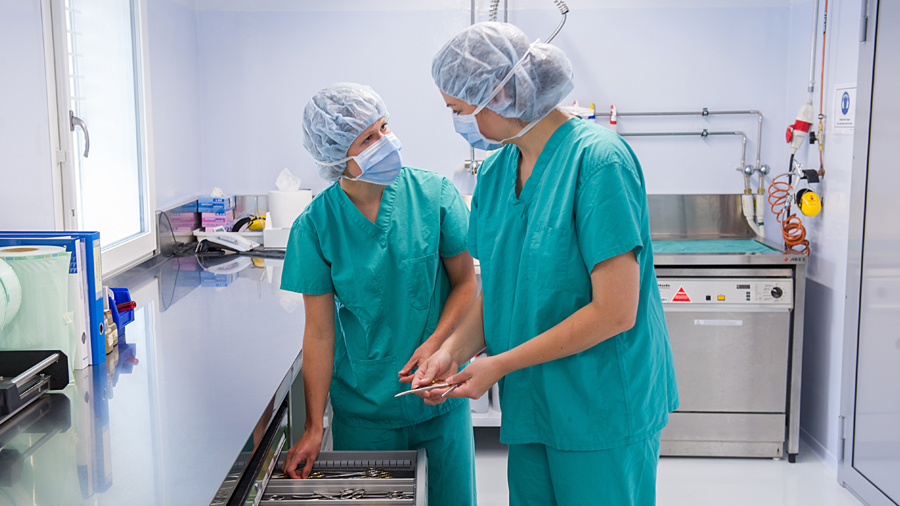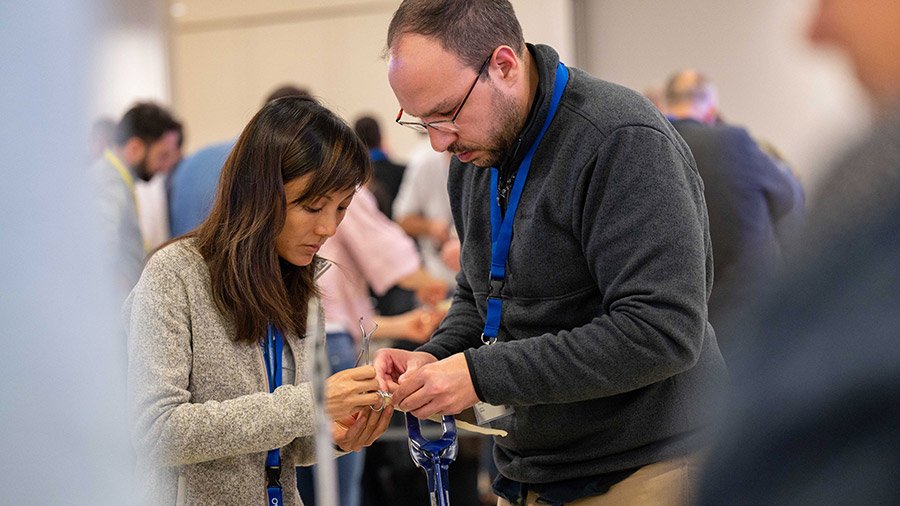Bridging the Gap: Translating Clinical Research to Clinical Practice
Many veterinary practitioners perform orthopedic surgery, but may not have the opportunity to keep updated on the latest relevant clinical research that improves and defines the best standards in successful orthopedics.
Bridging the Gap: Translating Clinical Research to Clinical Practice program aims to connect clinical research with clinical practice by providing a forum for clinical researchers to present their research to practitioners internationally.
The objectives of the symposia are:
- To make practitioners, residents, and specialists aware of recent and cutting-edge clinical research that is relevant and applicable to orthopedic surgical practice
- To group research into themed topics that are summarized by experienced AO VET faculty and followed by a moderated discussion on the topic
AO VET is looking for clinically relevant research in all fields of veterinary orthopedics to be presented over to an exciting virtual symposium in Winter 2025.
More details about the next call for application will be published in Spring 2025.
Explore the recorded symposia
Orthopedic complications and biomechanical comparisons
The 2024 AO VET Symposium features a panel discussion from clinical research presentations in veterinary orthopedic surgery. The session, moderated by Kenneth Johnson, with Peter Varga and Phillipp Schmierer moderating, features four researchers presenting the following innovative studies:
- Incidence of bandaging complication in cats after clean orthopaedic surgery: a retrospective study of 152 cases by Debbie Clayton from Australia
- Biomechanical comparison of plate fixation methods in a tibial fracture model by Norihiro Muroi from US
- Comparison between two total hip replacement cup impactor types in the accuracy of cup positioning: an in vitro study by Davide Mancusi from Italy
- Biomechanical Comparison of Variable Pitch Headless Compression Screws and Cortical Lag Screws for Their Generation of Interfragmentary Compression and Area of Compression in Simulated Canine Lateral Humeral Condyle Fractures by Brendan Castellino from Australia
Production: 2024
Orthogonal locking plate, Linguistic validation OROMS, Augmentation of the dorsal rim
This symposium focuses of translating the latest research into clinical practice with the following panel members and presentations:
Chairperson: Kenneth Johnson, Australia
Moderators: Simon Roe, USA / Matthew Allen, UK / Michael Kowaleski, USA, Jeff Watkins, USA
Contributors: Brett Walter de Bruyn, Australia
- Effect of an orthogonal locking plate and primary plate working length on construct stiffness and plate strain in an in vitro fracture-gap model by Brett Walter de Bruyn, Australia
- Linguistic validation and cross-cultural adaptation of OROMS used in canine orthopedic care for the German and Spanish-speaking population by Heidi Radke, Switzerland
- Long-term outcome of augmentation of the dorsal rim as a treatment for young dogs with hip dysplasia by Irin Kwananocha, The Netherlands
- The implantation method and type of the proximal screw do not affect stress and strain in equine pastern arthrodesis with locking compression plate by Anderson Souza, Brazil
Production: 2023
Orthobiologics, Therapies and Bovine
This symposium focuses of translating the latest research into clinical practice will consist of presentations focusing on biologic therapies in musculoskeletal disease and a novel prosthesis for the management of cranial cruciate rupture in cattle, and how these can and should inform how we practice.
Contributors: Dean Richardson, Laurie Goodrich, Kyla Ortved, Samantha Morello, José García-López, Lindsay Knott, Sushmitha Durgam, Corsin Heim, Caroline Constant
Production: 2020
Internal Fixation, Biomechanics and Outcomes
This symposium consists of presentations focusing on clinical outcomes and biomechanical research studies and how these can and should inform how we practice.
Learning objectives:
- The athletic prognosis in Thoroughbred Racehorses following carpal arthroscopy.
- The long-term outcomes and potential limiting factors for horses undergoing Proximal Interphalangeal Joint arthrodesis using a combination of an axial LCP and abaxial trans articular screws.
- The benefits of a modified 5.5 mm cortex screw when tested in an equine lateral condylar fracture model.
- The use of an aiming device under CT guidance can improve outcomes when managing equine distal phalangeal fractures.
Contributors: Jeffrey Watkins, Anton Fürst, Janik Gasiorowski, Christoph Lischer, Fabrice Rossignol
Production: 2020
Orthobiologics, Therapies and Bovine
This symposium focuses of translating the latest research into clinical practice will consist of presentations focusing on biologic therapies in musculoskeletal disease and a novel prosthesis for the management of cranial cruciate rupture in cattle, and how these can and should inform how we practice.
Contributors: Dean Richardson, Laurie Goodrich, Kyla Ortved, Samantha Morello, José García-López, Lindsay Knott, Sushmitha Durgam, Corsin Heim, Caroline Constant
Production: 2020
Internal Fixation, Biomechanics and Outcomes
In this session you will hear yet-to-be-published research asking the following questions:
- What is the prevalence of meniscal lesions in small breed dogs with cranial cruciate ligament disease?
- Can we use pre-operative radiographs to predict meniscal injury in dogs with cranial cruciate ligament disease?
- Can we quantify the risk of luxation following total hip replacement in dogs?
These abstracts will be discussed by our panel of international orthopaedic experts: Professor Kenneth Johnson, Professor Eithne Comerford, and Professor Antonio Pozzi.
Learning objectives:
- The prevalence of meniscal lesions in small breed dogs with cranial cruciate ligament disease.
- Use of pre-operative radiographs to predict meniscal injury in dogs with cranial cruciate ligament disease.
- The value of routine follow up radiographs following tibial plateau levelling osteotomy.
- Quantify the risk of luxation following total hip replacement in dogs.
Contributors: Dean Richardson, Laurie Goodrich, Kyla Ortved, Samantha Morello, José García-López, Lindsay Knott, Sushmitha Durgam, Corsin Heim, Caroline Constant
Production: 2020



